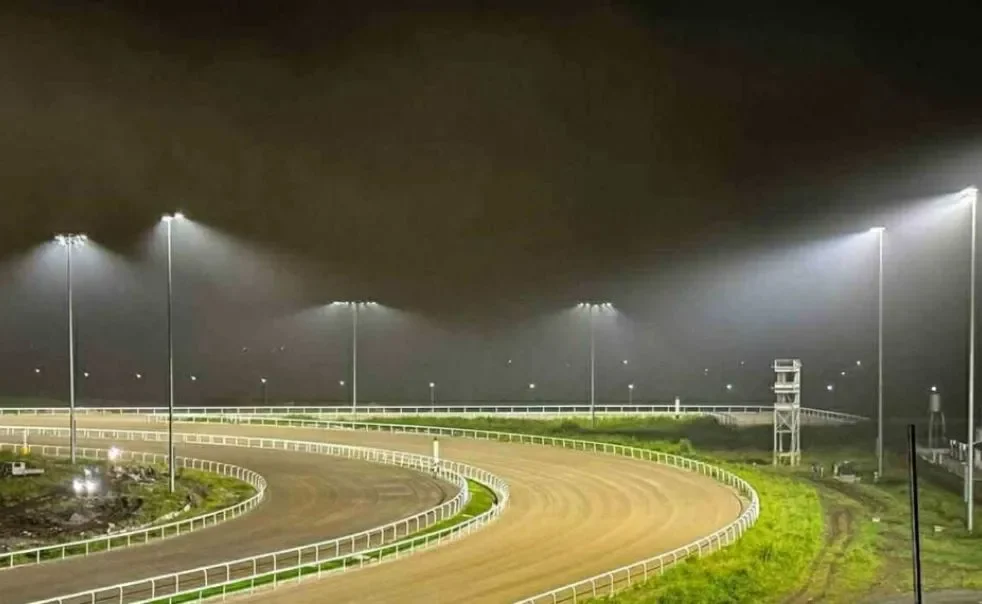Philippine Horse Racing Prepares for Bright New Start

Elle
Oct 2nd 2025
Likes
Share:
Once again, the Philippine Horse Racing Jockey Club really went one step forward in making horse racing lively again in the country with its initial floodlit barrier trials at the new Padre Garcia facility in Batangas race track. It was a very significant occasion not only for the PJC but also for a sport that has been fighting to keep its pace after COVID-19 and the shutdown of the traditional racetracks.
Padre Garcia, a place situated about 60 miles south of Manila, has been in progress since March 2022. Their 50-hectare site covers a 1600-meter main dirt track laid on a five percent camber, an inner 1500-meter training circuit, and newly designed stable blocks to house 2,000 horses. Although there is still work on the grandstand and other amenities, the illuminated trials were definitely a strong indication that the track is moving towards having races at the venue.
One of the headline names on barrier trial night was Buzz Rocket, a colt with an American pedigree that links him to Kentucky Derby winner California Chrome. Buzz Rocket made his racing debut in Kentucky but found only modest success before being imported to Philippine horse racing. His participation in the Batangas race track has been seen as symbolic of the fresh start many in the industry are hoping for.
Buzz Rocket coasted to victory in his heat, barrier trial seven of the evening, pricking his ears as he crossed the line. The performance under the newly installed floodlights drew attention, not only for the horse’s renewed presence but for the professional atmosphere the PJC is working to cultivate at the facility.
Australian race caller Harry Troy, a veteran of Asian racing circuits, was on hand to call the night’s events. Known for his decades at the now-defunct Taipa track in Macau, Troy is supporting the PJC’s development by mentoring local talent in broadcasting and track presentation.
“There are still details to refine,” Troy admitted, noting that he had to call races from trackside with a microphone and binoculars, as a caller’s box has yet to be completed. “But for what was essentially a rehearsal, it showed strong progress.”
Troy added that despite disruptions from Typhoon Nando and the looming Typhoon Opong, the trials were staged successfully. He expressed optimism that the track’s official opening, anticipated for late October or November, would proceed if the weather allows.
One of the evening’s major evaluations came in the form of heavy rainfall. On the day of the trials, around 125 millimeters of rain fell in a short span, flooding parts of the province. By the time the first set of horses entered the gates, however, the track had drained effectively.
South African track consultant Deon Vissar was pleased with how the circuit held up. “Within half an hour of the rain stopping, the track drained off very well,” he said. “We were able to harrow it and start almost on schedule. The jockeys reported good footing and appreciated the extra space in the new barrier stalls.”
Officials and staff, dressed in waterproof gear, carried out loading procedures efficiently despite the weather challenges. The smooth execution added to confidence in the venue’s preparation.
The PJC’s effort is seen as essential for the future of racing in Philippine horse racing. The sport has been reliant on Metro Turf Club’s Malvar track in recent years after the Manila Jockey Club and the Philippine Horse Racing Turf Club ceased operations. Stakeholders are worried about keeping the heritage of the sport, considering that the country has had racing vices since the 1800s.
Troy, who has been deeply involved with the local racing community, told how Philippine horse racing used to have a brilliant racing history in the 1930s and that the decline had been going on slowly after the 1960s. “I agree that it’s a positive sign to see the enthusiasm being brought back,” he said.
The floodlit trials heralded the stir of the forthcoming revival as the performance of Charmboy under the lights was quite stunning. Charmboy is a three-year-old horse, bred locally, with bloodlines from North America. Their performances, together with Buzz Rocket’s run, added substance to the belief that Padre Garcia could become the new focal point for Philippine horse racing.
While the facility is not yet complete, and while unpredictable weather remains a challenge, industry voices are cautiously confident about the new track’s future. The PJC expects to stage its first official race card by the end of October, provided construction milestones and weather conditions align.
“There’s a real sense of anticipation,” Troy said. “The project has already faced setbacks from storms, but the progress made has been steady. Once the gates open for a proper race day, it will signal an important new phase for Philippine horse racing.”
For a sport searching for stability and growth, the floodlit trials at Padre Garcia may prove to be the first step in building momentum toward a more sustainable future.
